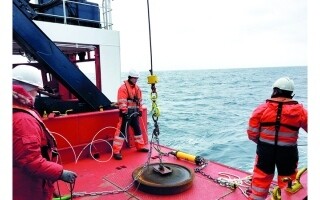
A group of researchers from Spain discovered "huge methane leaks" read at the bottom of the ocean in Antarctica. Methane is a gas capable of heating the planet 30 times more than carbon dioxide. The researchers noted methane bubbles in the ocean up to 700 meters long and 70 meters wide. These unknown leaks have become a potential "ecological bomb" for the planet's climate.
The expedition of scientists was directed at the search for large leaks in January. The gas accumulated on the ocean floor about 20 thousand years ago due to the decomposition of organic materials in the form of methane hydrates, solid crystalline substances. It has been suggested that the thawing of a huge ice sheet in Antarctica, which began at the end of the last Ice Age, led to a decrease in pressure on the Earth's crust and raised land above sea level, triggering subsequent gas leaks. The phenomenon known as "the Ice Age rebound" is thus explained. This clarifies the leak of ancient frozen methane on the ocean floor.
Researchers conducted studies in the southern polar region, one of the most affected areas from global warming on the planet. They discovered approximately 24 gigatons of methane, accumulated in the hydrates of methane in this region, which equals historical methane emissions from all of humanity over two years.
Methane, which is found in frozen and solid state, transforms into gas. According to Ricardo León from the Institute of Geology and Mining of Spain, such phenomena have already been observed in the northern hemisphere, but in Antarctica, this is the first time.
Scientists met with journalists on King George Island in Antarctica on February 8 after completing their research expedition. Their preliminary results show that gas is released from the sediments of the Earth through fractures, often through the glacial volcanoes at depths of hundreds of meters below sea level.
Methane hydrates, like ice, are stable at low temperatures and high pressures, but with rising ocean temperatures and a decrease in sea weight due to the uplift of land in Antarctica, they become unstable and predict gas leaks. Methane bubbles, detected by scientists at a depth of about 150 meters from the ocean surface, can provide insights into the impact of this gas on the atmosphere.
Scientists Leon and Orjales warned about a possible collapse of the ocean floor due to the instability of underwater deposits, which could lead to the formation of massive sinkholes and prices. They emphasize the fact that gas, when turning from hydrates into gas, occupies 160 times more volume.













